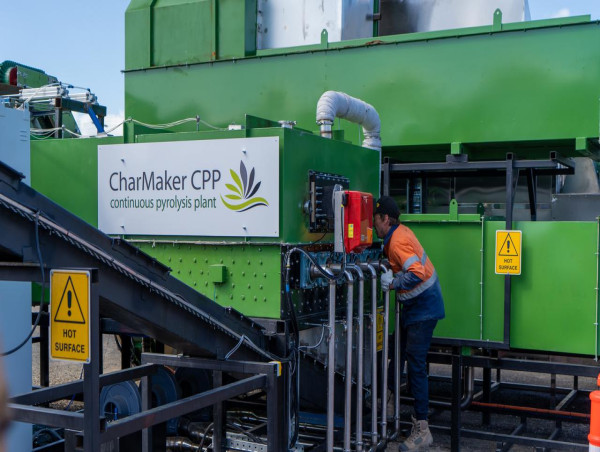At aged care homes across the country, an unfathomable problem is literally piling up with absorbent, single-use products needed to help residents who struggle with bladder and bowel control.
Aksh Bhola, who manages an Arcare facility at Knox in Melbourne's east, says the volume of incontinence waste the centre produces is a constant challenge.
"We always have to ask for more collection," he tells AAP. "All the time."
At Knox, that amounts to 10 tonnes of incontinence waste a year, all of it going to landfill.
The situation is repeated at nursing homes nation-wide with a volume so large it dwarfs the disposable nappy waste stream.
It's estimated incontinence products account for 148,000 tonnes of Australian waste every year.
That's the equivalent of 3700 humpback whales or almost three Sydney Harbour Bridges.
And it's a figure that will only grow in line with Australia's ageing population.
At least 77 per cent of people in residential aged care are incontinent, according to Swedish hygiene company Essity, and one in four women will be incontinent at some stage in their lives.
Essity is conducting a waste management trial for their incontinence products after customers pushed for a better solution.
Project Divert lead Rochelle Lakes says the taboo around incontinence pads prevented people speaking up.
"Every person on the street, you could talk to about baby nappies, they'd have a full opinion on the waste it generates, whereas people just don't have that awareness of incontinence pads," she says.
"It's not something people like to make aware that they are incontinent but it's very common."
Ms Lakes says it's about time for a product stewardship scheme for incontinence pads.
"It's a lot of waste and customers have been asking us for a better solution," she says.
"There's been a lot of things that have started but fallen over."
Managing waste products is also difficult, given the complexity of incontinence.
Wastewater specialist Emma Thompson Brewster's work in this area has been in conjunction with Southern Cross University and University of Queensland.
"So babies, most of them will use disposable nappies and then they'll fairly quickly transition to toilets," she says.
But experiences of incontinence among adults vary widely and so do the products.
Offerings range from panty liners to pull-up trunks, which differ in weight and material.
Some people have urinary-only incontinence and some faeces-only. Others have both.
Care settings also impact the amount of waste, where pads are changed at certain times in hospitals and homes.
While reusable options have popped up on store shelves as an alternative, Dr Brewster says it's important to come up with ways to manage single-use pads.
"These products are never going to be replaced," she says.
"I don't think it would be ethical to fully replace these cloth products because there is a huge part of society where re-usables are not an option."
Launched in February with federal government funding, Project Divert utilises patented pyrolysis technology, which heats waste materials in the absence of oxygen and therefore means lower emissions than traditional incineration.
The waste is converted to a biochar - charcoal produced from the pyrolysis - which may have various commercial applications.
Ms Lake says pyrolysis technology is a more cost effective and flexible approach than composting, which requires the removal of plastic and in some cases, faeces and urine.
Using an oxygen-less oven can manage the waste on a large scale without worrying about adjustments.
"We manufacture hand towels as well and we know that they're compostable. But it's very, very hard to find composting facilities that will take the product," she says.
"So people don't want to compost hand towels. I can't imagine composting incontinence products."
Mr Bohla says it's a no-brainer for the facility to take part in the trial.
"We were so confident in participating in the trial because it was initiated by the same company that actually supplied incontinence products," he says.
"It would be better in terms for the product manufacturer who knows how to process their waste properly."
The next step is to determine whether the process can be commercially viable.
While the trial is for commercial operations, there are hopes the technology can be used for household incontinence waste as well.






